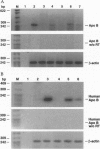Abstract
Male infertility, affecting as many as 10% of the adult population, is an extremely prevalent disorder. In most cases, the cause of the condition is unknown, and genetic factors that might affect male fertility, other than some sequences on the Y chromosome, have not been identified. We report here that male mice heterozygous for a targeted mutation of the apolipoprotein B (apo B) gene exhibit severely compromised fertility. Sperm from these mice failed to fertilize eggs both in vivo and in vitro. However, these sperm were able to fertilize eggs once the zona pellucida was removed but displayed persistent abnormal binding to the egg after fertilization. In vitro fertilization-related and other experiments revealed reduced sperm motility, survival time, and sperm count also contributed to the infertility phenotype. Recognition of the infertility phenotype led to the identification of apo B mRNA in the testes and epididymides of normal mice, and these transcripts were substantially reduced in the affected animals. Moreover, when the genomic sequence encoding human apo B was introduced into these animals, normal fertility was restored. These findings suggest that this genetic locus may have an important impact on male fertility and identify a previously unrecognized function for apo B.
Full text
PDF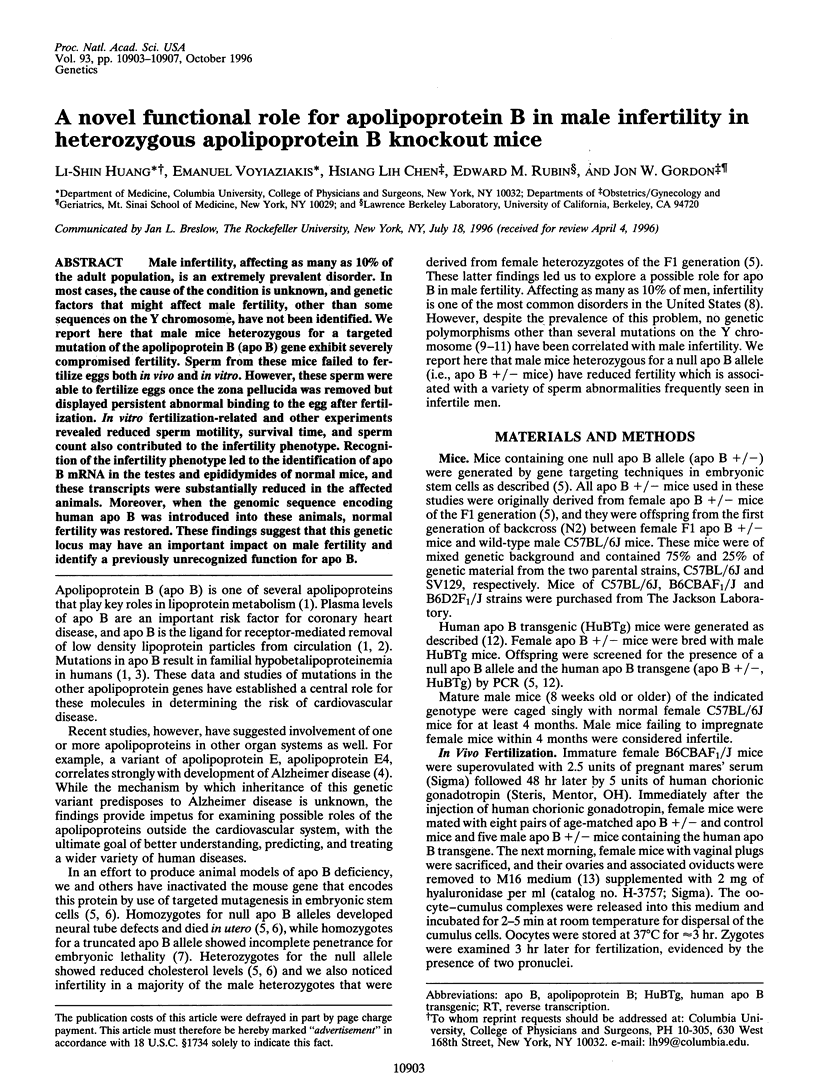
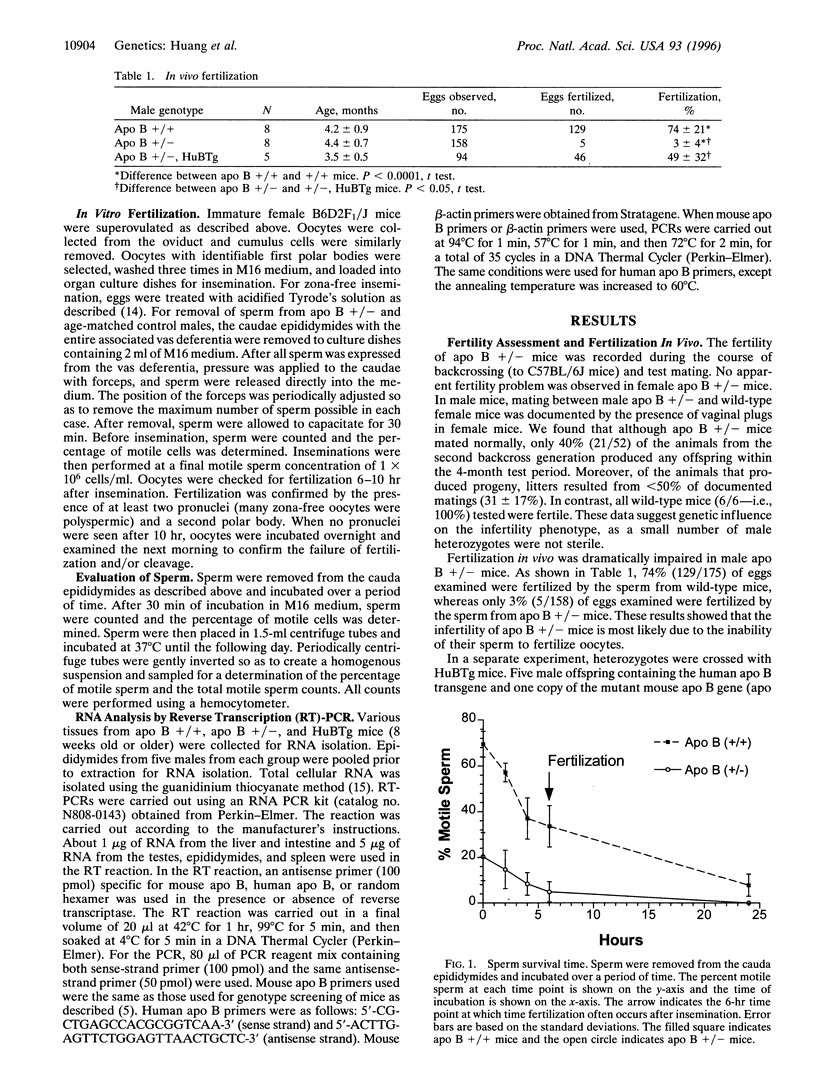
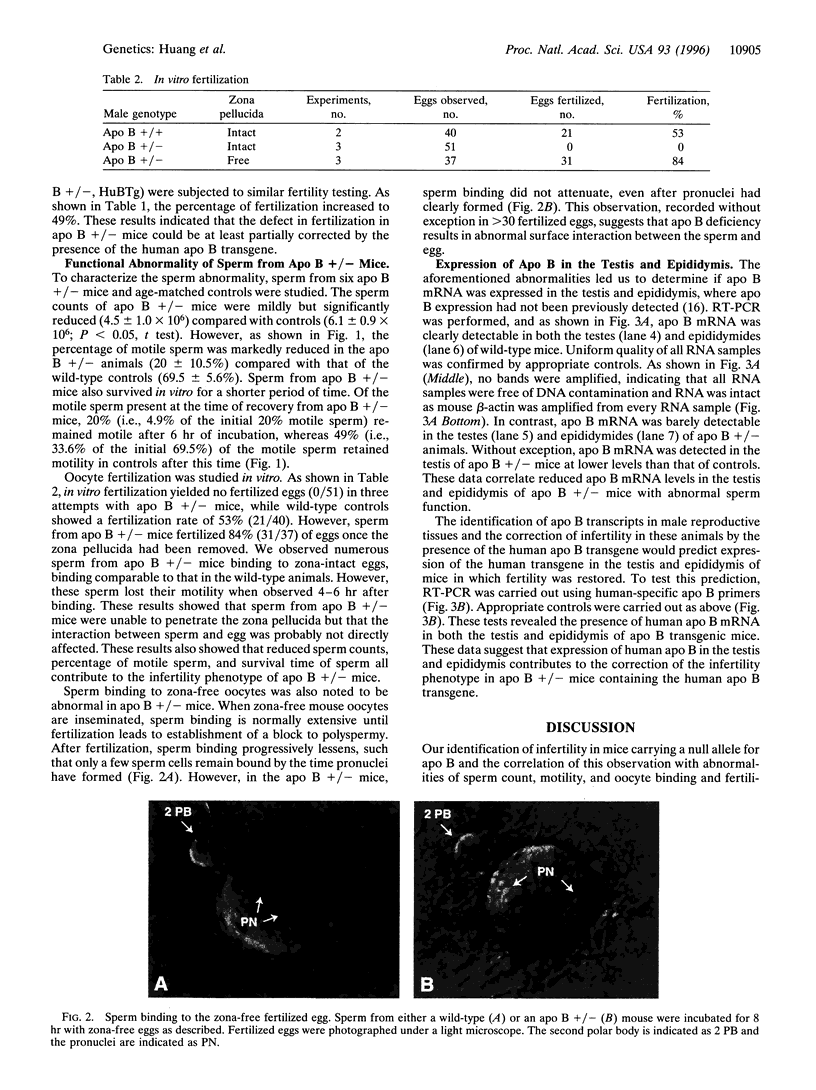
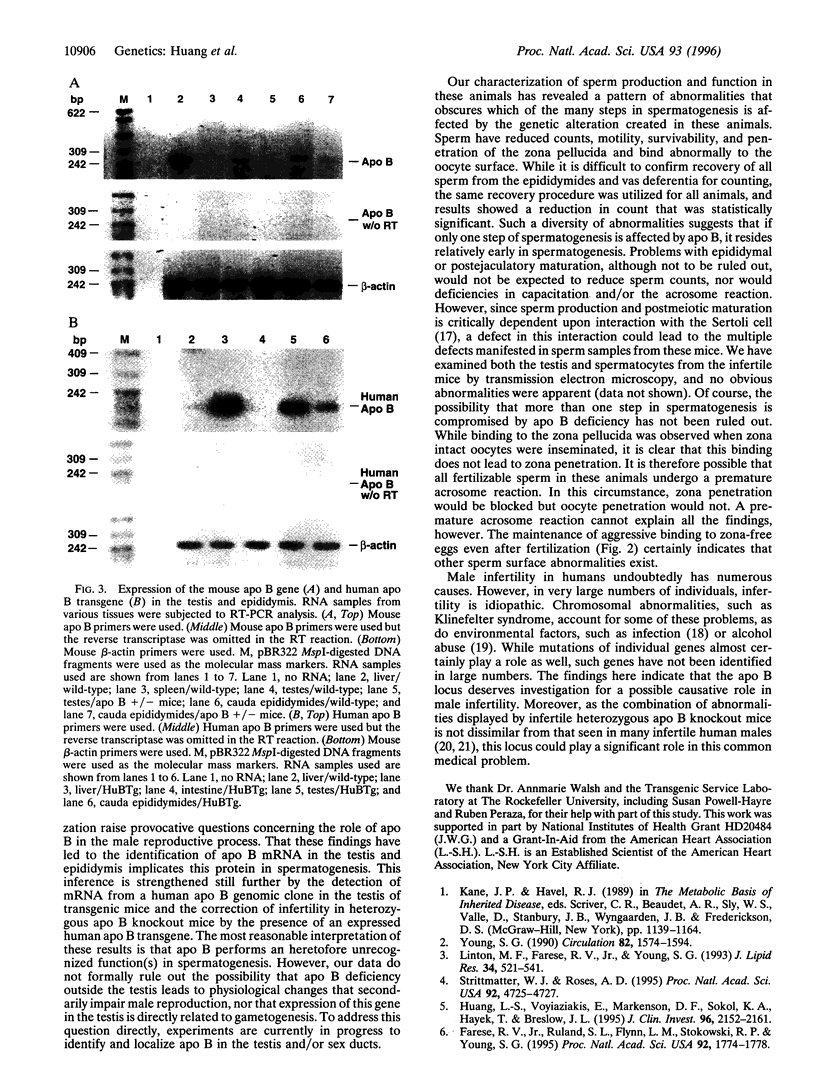
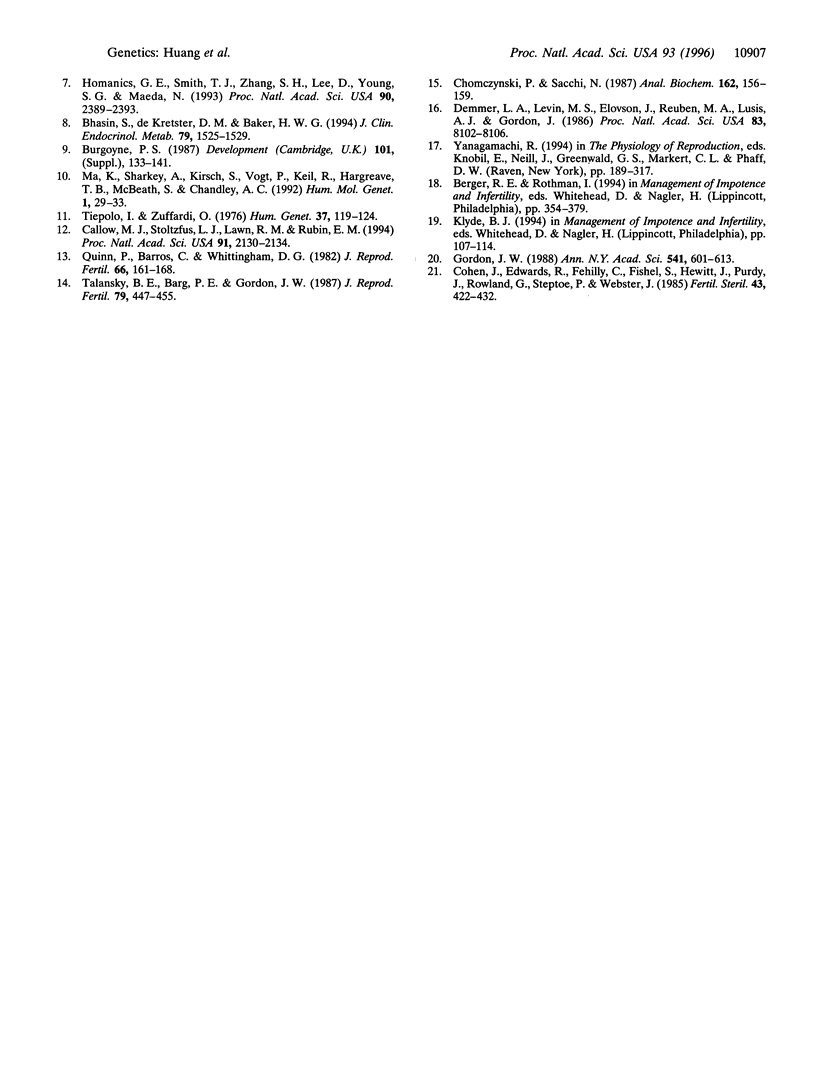
Images in this article
Selected References
These references are in PubMed. This may not be the complete list of references from this article.
- Bhasin S., de Kretser D. M., Baker H. W. Clinical review 64: Pathophysiology and natural history of male infertility. J Clin Endocrinol Metab. 1994 Dec;79(6):1525–1529. doi: 10.1210/jcem.79.6.7989450. [DOI] [PubMed] [Google Scholar]
- Burgoyne P. S. The role of the mammalian Y chromosome in spermatogenesis. Development. 1987;101 (Suppl):133–141. doi: 10.1242/dev.101.Supplement.133. [DOI] [PubMed] [Google Scholar]
- Callow M. J., Stoltzfus L. J., Lawn R. M., Rubin E. M. Expression of human apolipoprotein B and assembly of lipoprotein(a) in transgenic mice. Proc Natl Acad Sci U S A. 1994 Mar 15;91(6):2130–2134. doi: 10.1073/pnas.91.6.2130. [DOI] [PMC free article] [PubMed] [Google Scholar]
- Chomczynski P., Sacchi N. Single-step method of RNA isolation by acid guanidinium thiocyanate-phenol-chloroform extraction. Anal Biochem. 1987 Apr;162(1):156–159. doi: 10.1006/abio.1987.9999. [DOI] [PubMed] [Google Scholar]
- Cohen J., Edwards R., Fehilly C., Fishel S., Hewitt J., Purdy J., Rowland G., Steptoe P., Webster J. In vitro fertilization: a treatment for male infertility. Fertil Steril. 1985 Mar;43(3):422–432. doi: 10.1016/s0015-0282(16)48443-8. [DOI] [PubMed] [Google Scholar]
- Demmer L. A., Levin M. S., Elovson J., Reuben M. A., Lusis A. J., Gordon J. I. Tissue-specific expression and developmental regulation of the rat apolipoprotein B gene. Proc Natl Acad Sci U S A. 1986 Nov;83(21):8102–8106. doi: 10.1073/pnas.83.21.8102. [DOI] [PMC free article] [PubMed] [Google Scholar]
- Farese R. V., Jr, Ruland S. L., Flynn L. M., Stokowski R. P., Young S. G. Knockout of the mouse apolipoprotein B gene results in embryonic lethality in homozygotes and protection against diet-induced hypercholesterolemia in heterozygotes. Proc Natl Acad Sci U S A. 1995 Feb 28;92(5):1774–1778. doi: 10.1073/pnas.92.5.1774. [DOI] [PMC free article] [PubMed] [Google Scholar]
- Gordon J. W. Use of micromanipulation for increasing the efficiency of mammalian fertilization in vitro. Ann N Y Acad Sci. 1988;541:601–613. doi: 10.1111/j.1749-6632.1988.tb22297.x. [DOI] [PubMed] [Google Scholar]
- Homanics G. E., Smith T. J., Zhang S. H., Lee D., Young S. G., Maeda N. Targeted modification of the apolipoprotein B gene results in hypobetalipoproteinemia and developmental abnormalities in mice. Proc Natl Acad Sci U S A. 1993 Mar 15;90(6):2389–2393. doi: 10.1073/pnas.90.6.2389. [DOI] [PMC free article] [PubMed] [Google Scholar]
- Huang L. S., Voyiaziakis E., Markenson D. F., Sokol K. A., Hayek T., Breslow J. L. apo B gene knockout in mice results in embryonic lethality in homozygotes and neural tube defects, male infertility, and reduced HDL cholesterol ester and apo A-I transport rates in heterozygotes. J Clin Invest. 1995 Nov;96(5):2152–2161. doi: 10.1172/JCI118269. [DOI] [PMC free article] [PubMed] [Google Scholar]
- Linton M. F., Farese R. V., Jr, Young S. G. Familial hypobetalipoproteinemia. J Lipid Res. 1993 Apr;34(4):521–541. [PubMed] [Google Scholar]
- Ma K., Sharkey A., Kirsch S., Vogt P., Keil R., Hargreave T. B., McBeath S., Chandley A. C. Towards the molecular localisation of the AZF locus: mapping of microdeletions in azoospermic men within 14 subintervals of interval 6 of the human Y chromosome. Hum Mol Genet. 1992 Apr;1(1):29–33. doi: 10.1093/hmg/1.1.29. [DOI] [PubMed] [Google Scholar]
- Quinn P., Barros C., Whittingham D. G. Preservation of hamster oocytes to assay the fertilizing capacity of human spermatozoa. J Reprod Fertil. 1982 Sep;66(1):161–168. doi: 10.1530/jrf.0.0660161. [DOI] [PubMed] [Google Scholar]
- Strittmatter W. J., Roses A. D. Apolipoprotein E and Alzheimer disease. Proc Natl Acad Sci U S A. 1995 May 23;92(11):4725–4727. doi: 10.1073/pnas.92.11.4725. [DOI] [PMC free article] [PubMed] [Google Scholar]
- Talansky B. E., Barg P. E., Gordon J. W. Ion pump ATPase inhibitors block the fertilization of zona-free mouse oocytes by acrosome-reacted spermatozoa. J Reprod Fertil. 1987 Mar;79(2):447–455. doi: 10.1530/jrf.0.0790447. [DOI] [PubMed] [Google Scholar]
- Tiepolo L., Zuffardi O. Localization of factors controlling spermatogenesis in the nonfluorescent portion of the human Y chromosome long arm. Hum Genet. 1976 Oct 28;34(2):119–124. doi: 10.1007/BF00278879. [DOI] [PubMed] [Google Scholar]
- Young S. G. Recent progress in understanding apolipoprotein B. Circulation. 1990 Nov;82(5):1574–1594. doi: 10.1161/01.cir.82.5.1574. [DOI] [PubMed] [Google Scholar]




